Posts Tagged: Honey Bee
What do you know about ants?
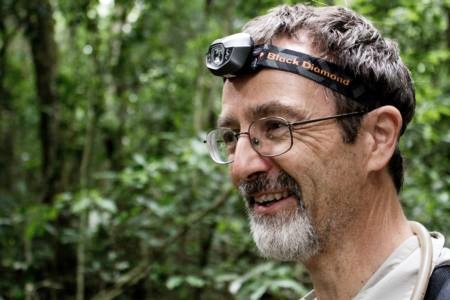
If you think they're just uninvited guests at your picnic or something to spray or stomp, think again.
They're marvelous creatures, as any ant specialist will tell you.
You can learn about them from noted ant specialist Phil Ward, professor of entomology, UC Davis Department of Entomology and Nematology, when he presents a program Friday, July 17, on the native ants found in the Häagen-Dazs Honey Bee Haven, UC Davis campus.
The event, free and open to the public, is set from noon to 1:30 p.m. in the half-acre bee garden, located on Bee Biology Road, next to the Harry H. Laidlaw Jr. Honey Bee Research Facility, west of the central campus.
Among the native ants at the haven are:
- Dorymyrmex insanus (workers small, ~3 mm long, black; conspicuous crater-shaped nests in bare soil)
- Dorymyrmex bicolor (workers small, ~3 mm long, bicolored, dull orange and black; conspicuous crater-shaped nests in bare soil)
- Prenolepis imparis (also known as the “winter ant” or “winter honey ant”; workers small (3-4 mm long), brown, with shiny gaster; inconspicuous nests in soil)
- Formica moki (sometimes called “field ants”; workers medium-sized (6 mm long), with a dark head, orange-brown mesosoma (thorax) and silvery-gray gaster; nest in soil)
Images of these species can be found on the AntWeb, a website hosted and supported by the California Academy of Sciences that provides specimen-level data, images, and natural history of ants.
Approximately six other species of native ants reside in the vicinity of the garden, including Formica aerata, Pogonomyrmex subdentatus, and Solenopsis xyloni. The introduced Argentine ant (Linepithema humile) occurs around the Bee Biology building, but it appears not to have colonized the bee garden.
Attendees will learn how to observe and identify California native ants, and learn about the differences between bees and ants, said Christine Casey, director of the Häagen-Dazs Honey Bee Haven, which is owned and operated by the UC Davis Department of Entomology and Nematology. It was planted in the fall of 2009.
The program is part of a brown bag lunch series. For more information on the ant program, see the flier and/or access the haven web site.
Meanwhile, if you want to learn more about ants, be sure to download (free!) Dr. Eleanor's Book of Common Ants, an entry-level book by entomologist/science writer Eleanor Rice; entomologist/ant specialist/photographer Alex Wild (he received his doctorate in entomology from UC Davis, studying with Phil Ward, and is now a curator at the University of Texas, Austin); and designer Neil McCoy.
"Of the nearly 1,000 ant species living in North America, fewer than 30 are true pests, and fewer still actually can hurt us," Rice points out in her book. "We might not notice them, but they're there, and they shape, literally shape, our world," she writes. "Look at the colossal trees in your forest, the plants around your lawn. Ants, like winnow ants, plant the forest understory, ultimately contouring plant distribution that becomes those giants of trees, animal homes, abounding green life. Other ants help turn soil (more than earthworms in some places!), break up decomposing wood and animals, and keep the canopy healthy."
Ants are also crawling in the international spotlight now. Did you know the North American release of the superhero movie, Ant-Man, is Friday, July 17?
That makes Friday, July 17, a good day for ants.
Author: Kathy Keatley Garvey

Formica moki (Photo by Phil Ward, www.entweb.org)
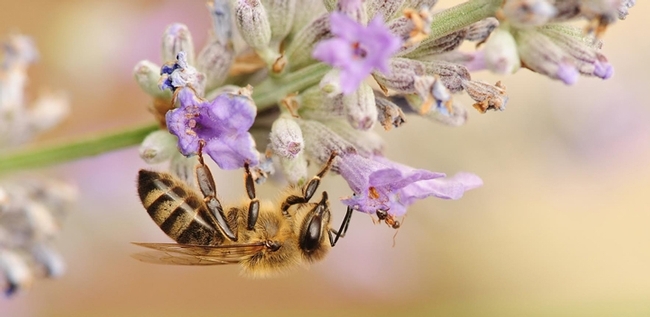
A honey bee and its cousin, an ant, a velvety tree ant, Liometopum occidentale. (Photo by Kathy Keatley Garvey)

An ant crater, the work of a species in the genus Dorymyrmex. (Photo by Kathy Keatley Garvey)
Allen-Diaz promises to wear bees to raise scholarship dollars for UC students

Allen-Diaz, vice president for UC Agriculture and Natural Resources (UC ANR), has agreed to participate in a stunt with thousands of buzzing honey bees clustered on either a UC ANR T-shirt or on a UC ANR banner in a project coordinated by the world-renowned bee wrangler Norm Gary, UC Davis emeritus professor of entomology.
Allen-Diaz holds several other titles: director of the Agricultural Experiment Station, director of Cooperative Extension, and professor and Russell Rustici Chair in Rangeland Management at UC Berkeley. But next spring, she will become “The Bee Lady” or “The Bee-liever,” surrounded by thousands of buzzing honey bees.
And, if the UC ANR administrator raises $5,000, she’s promised to eat insect larvae to promote awareness of alternative protein sources. (To donate, see http://promises.promiseforeducation.org/vpanr)
Allen-Diaz has never intentionally been near a cluster of bees. “I have to say that most of the bee interactions that I’ve had in the past have been stepping on them barefoot on the lawn as a child in Edmonds, Wash.; jumping off a rock wall into a bee hive as a child – 11 stings on my neck and face; and trying to control meat-eating wasps (protecting her families’ hands, faces and legs) at our Oregon home,” she said.

Norm Gary said he will set up the project sometime in the spring, when the weather warms and the bees begin their annual population build-up.
Gary, who turns 80 in November, retired in 1994 from UC Davis after a 32-year academic career. He also retired this year as a bee wrangler and as a 66-year beekeeper, but “I’m coming out of retirement to help with this cause,” he said.
“Bees are not inclined to sting if they are well-fed, happy and content and are ‘under the influence’ of powerful synthetic queen bee odors — pheromones — which tend to pacify them,” Gary said.
While at UC Davis, he formulated a pheromone solution that is very effective in controlling bee behavior. Bees, attracted to pheromones, cluster on the drops of pheromones, whether it be a sign, a t-shirt or a plastic flower.
“Bees wrangled by this procedure have no inclination to sting,” he said. “Stinging behavior occurs naturally near the hive in defense of the entire colony not for the defense of the individual bee, because bees that sting die within hours. Using this approach I have had as many as a million bees clustered on six people simultaneously.”
“Most people fear bees,” Gary acknowledged. “They think bees ‘want’ to sting them. Wrong! They sting only when the nest or colony is attacked or disturbed or when they are trapped in a physical situation where they are crushed.”

Gary holds a Guinness Book of World Records for most bees (109) in his mouth; he trained the bees to fly into his mouth to collect food from a small sponge saturated with his patented artificial nectar. He kept the bees inside his closed mouth for 10 seconds.
The retired bee scientist is the author of the popular book, “Honey Bee Hobbyist: The Care and Keeping of Bees,” now in its second printing. During his academic career, he published more 100 peer-reviewed scientific papers and four book chapters.
Gary, who received his doctorate in apiculture from Cornell University in 1959, is known internationally for his bee research. He was the first to document reproductive behavior of honey bees on film and the first to discover queen bee sex attractant pheromones. He invented a magnetic retrieval capture/recapture system for studying the foraging activities of bees, documenting the distribution and flight range in the field. His other studies revolved around honey bee pollination of agricultural crops, stinging and defensive behavior, and the effects of pesticides on foraging activities, among dozens of others.
A professional jazz and Dixieland musician, Gary is also known for playing the “B-Flat clarinet” while covered from head to toe with bees. He continues to play professionally in the Sacramento area—minus the bees.
“I’m looking forward to the big buzz next spring,” he said. “I promise it will be un-bee-lievable.”
Related links:
http://promises.promiseforeducation.org/vpanr
http://ucanr.edu/sites/anrstaff/Administration/Vice_President/Barbara_Allen-Diaz_Biography/
http://www.promiseforeducation.org/about
UC studies flowering hedgerows' ability to attract pollinators
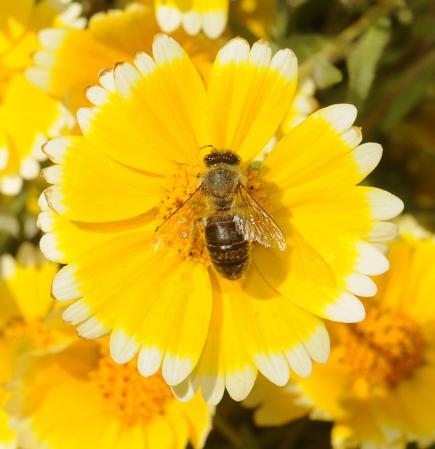
Claire Kremen, associate professor in the Department of Environmental Science, Policy and Management at UC Berkeley, said the hedgerows can include a variety of plants with an eye toward providing pollinators with nectar from early spring until fall.
Research by farm advisors and farmers have already demonstrated the usefulness of on-farm hedgerows.
More than 20 years ago, Rachael Long, UC Cooperative Extension advisor in Yolo County, was inspired by a visit to John Anderson's aptly named Hedgerow Farms in Winters.
"Jeepers, not only do we enhance biodiversity, but we can change our landscape to favor beneficial insects," she recalled thinking.
So, you want to be a commercial beekeeper...
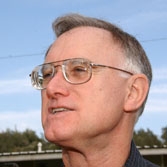
Perhaps you want to sell honey and beeswax, rent your bees for commercial crop pollination, rear queen bees, or sell bulk bees.
The newly published second edition of the Small Farm Handbook, which draws on the knowledge of 32 experts from the University of California, contains a wealth of information. The chapter, "Raising Animals," covers beekeeping as a business.
“Costs to start a beekeeping business are not particularly high compared to many small businesses, and a well-planned and managed operation can be profitable,” writes Eric Mussen, Extension apiculturist with the UC Davis Department of Entomology.
“Beekeepers own, rent or find rent-free apiary locations where their bees can forage for food without becoming a nuisance to humans or livestock. Beekeepers must manage their colonies to the benefit of the bees and in compliance with existing state, county and municipal ordinances.”
For those who want to rent bees for pollination, “rental rates are as much as 10 times higher for almond orchards, which need to be pollinated a time of year when bee supplies barely meet demand.”
Indeed, California has some 750,000 acres of almonds, and each acre needs two colonies for pollination. Since the Golden State doesn't have that many bees, they are trucked in from all over the country.
"Fifty percent of the bees in the United States have to be in California to pollinate the almonds," molecular biologist and biochemist Joseph DeRisi of UC San Francisco said Jan. 9 at his lecture in the Genome and Biomedical Sciences Facility at UC Davis.
DeRisi, a Howard Hughes Medical Institute investigator and professor and vice chair of the Department of Biochemistry and Biophysics at UCSF, pointed out that “California supplies 80 percent of the world's almond supply.”
No bees, no almonds.
“Beekeeping can sound deceptively simple,” Mussen writes in the chapter, “but in fact beekeeping is a form of animal husbandry that involves providing feed when nectar and pollens are lacking, preventing infections from various microbes, dealing with two well-established parasitic mites, and reducing the influence of Africanized bees. Before you try to keep bees commercially on your own, you should gain experience working with a commercial beekeeper for one or more seasons.”
The latest parasite discovered in bees is the parasitic phorid fly (Apocephalus borealis). In work published Jan. 3 in the Public Library of Science (PLoS One) journal, San Francisco State University researchers wrote that the parasitic fly lays its eggs in the honey bees; it was previously known to parasitize bumble bees, but not honey bees.
The fly-infested bees display altered bee behavior. Nicknamed “zombie bees,” the bees fly at night toward lights, such as porch, building or street lights. They do not return to the hive; they die.
Neither Mussen nor DeRisi believes that the parasitic fly is a dominant factor in colony collapse disorder, a mysterious phenomenon characterized by adult bees abandoning the hive.
For tips on beekeeping, be sure to check out Mussen's bimonthly newsletter, from the UC Apiaries, and his other resource, Bee Briefs, both posted on the UC Davis Department of Entomology website.
And if you want to become an full-time commercial beekeeper, read the “Estimated Investment Needed for a 1,000-Colony Bee Operation” in the Small Farm Handbook.

Honey bee heading for almond blossoms, spring of 2011, at the Harry H. Laidlaw Jr. Honey Bee Research Facility, UC Davis. (Photo by Kathy Keatley Garvey)
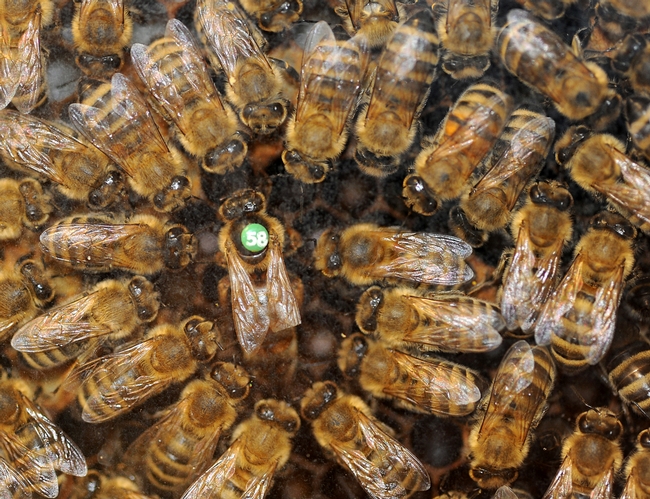
The queen and her court at the Harry H. Laidlaw Jr. Honey Bee Research Facility, UC Davis. (Photo by Kathy Keatley Garvey)
A honey of an event

The occasion: The Bee Informed event.
The site: The historic ballroom of the Citizen Hotel, Sacramento.
“Honey is one of my favorite ingredients to use in desserts because of its beautifully nuanced flavors and gorgeous colors,” said Bee Informed coordinator Elaine Baker (top left) of the Citizen Hotel/Grange Restaurant. “It’s just magical.”
The event, open to the public, raised $600 for the Häagen-Dazs Honey Bee Haven at the Harry H. Laidlaw Jr. Honey Bee Research Facility, UC Davis.
The event buzzed with bee and honey aficionados—and folks who just wanted to learn about bees and the products they produce.

Baker, who blogs about food, came up with the idea of a “Bee Informed” event to raise public awareness about the plight of the honey bees.
Keynote speaker Eric Mussen (below), UC Davis extension apiculturist, updated the crowd about colony collapse disorder (CCD) and talked about the health of honey bees.
“The news media wrongfully reports that 33 percent to 35 percent of our nation’s honey bees are dying of CCD,” he said.

CCD, the mysterious phenomenon characterized by adult bees abandoning the hive, may be due in part to an undiscovered microbe, but the malady “is going to be with us for awhile,” he said.
The Häagen-Dazs Honey Bee Haven, open to the public year around, is a half-acre bee friendly garden planted last fall next to the Laidlaw facility. It serves as a year-around food source for the Laidlaw bees and other pollinators; raises public awareness about the plight of bees; and provides educational opportunities for visitors, who can learn what to plant in their own yards to attract pollinations.
It is also a research garden; native pollinator specialist Robbin Thorp, emeritus professor of entomology, has found more than 50 species of bees, including leafcutter bees, metallic green sweat bees and bumble bees, at the site over the last two years.
Baker described the Bee Informed event as a great success. “Fantastic speakers, terrific vendors, delicious cocktails and desserts, not to mention all the beautiful honey.” A drawing for prizes included honey from Sacramento-area beekeepers and specially bottled honey made by UC Davis bees.
When asked to share one of her favorite honey recipes, she provided this one. Bon Appétit!
Buckwheat Honey Tea Bread
Makes 1 9x5” loaf
In a bowl whisk together:
2-1/4 cups all-purpose flour
3/4 cup sugar
1 tablespoon orange zest, finely chopped
2 teaspoons baking powder
1/2 teaspoon baking soda
1/2 teaspoon ginger
1/2 teaspoon cinnamon
1/2 teaspoon kosher salt
Set aside. In a mixer with a paddle attachment combine:
3/4 cup buckwheat honey
3/4 cup hot water
3 tablespoons brandy
4 tablespoons butter, melted
Blend on low until combined. Add dry ingredients and blend on low speed just until combined. Put into a greased 9x5” loaf pan. Bake at 350F about 50-60 min. or until the bread tests done and is a deep golden brown color. Remove from oven and let cool until barely warm, then remove from the pan. In a small saucepan heat up a small amount of the buckwheat honey with a little bit of water to make a glaze and brush on the top of the loaf. Let cool completely. This bread is best served the same day.
If you don’t have a mixer this recipe can also be mixed by hand. You can use any flavor of honey you like – wildflower, orange blossom, etc. Elaine Baker likes buckwheat honey because of the assertive flavor and beautiful color.

Show me the honey